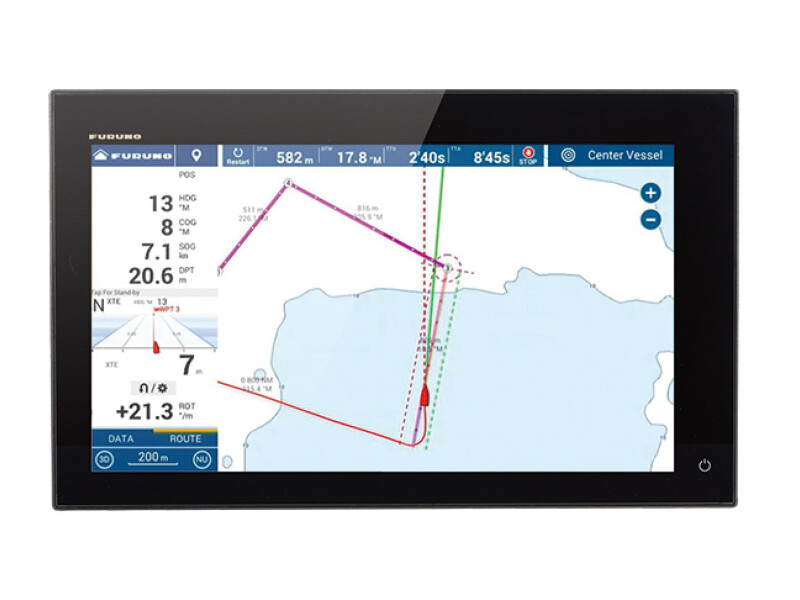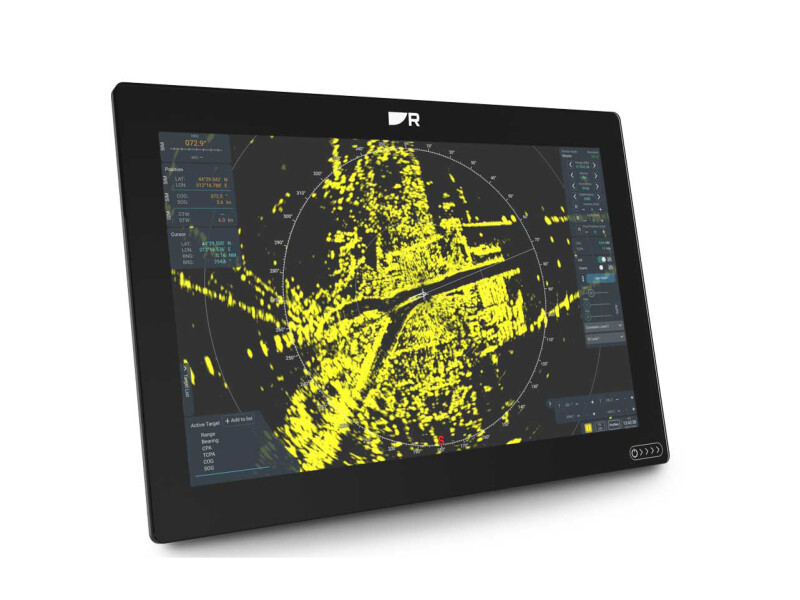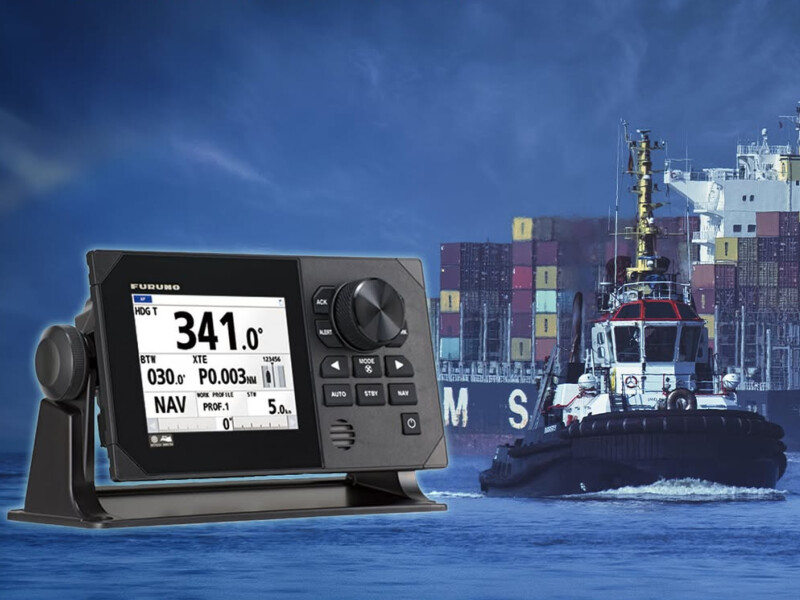Recent offerings in the world of marine electronics are intended to unlock new benefits for commercial marine users. Whether it’s smoother, more efficient vessel operations, easier installs, or reduced maintenance, new products from companies like Furuno and Raymarine have a lot to offer.
FURUNO’S AUTOPILOT
“We think we are onto something and are seeing some very good results,” said Matt Wood, national sales manager at Furuno USA, Inc., Camas, Wash., when speaking about the NavPilot 1000, the company’s new autopilot.
The product has been installed on about two dozen vessels, “a number of different commercial applications — tugs to megayachts to a variety of workboats,” said Wood.
The NavPilot 1000 is the first commercial autopilot Furuno has introduced to the market since the 1990s. Earlier Furuno autopilots “were a lot more rudimentary, a single display, not much interfacing with other gear,” said Wood. Whereas, in contrast, the NavPilot 1000 “interfaces with a lot of steering gear but also embraces NMEA 2000, giving flexibility we didn’t have before.” Add CAN bus to simplify wiring interfaces and a lot of weight is eliminated, “both from a conventional cabling standpoint,” said Wood, but especially navigation data cabling. For a single device, it might mean removing 10 to 20 pounds of copper wire.”
The NavPilot 1000 can be worked into existing autopilot systems, according to Wood. He said Furuno “paid a lot of attention to the ability to retrofit into existing autopilot systems.” Pull out the processor and display on your older autopilot system, and our processor and display go in. If there’s a rudder feedback, we just plug that into our system, and away we go. We walk the line between someone wanting a new autopilot system that really steers the boat well,l but not wanting to tear apart what they have on board.”

Once Furuno had a working prototype, sea trials for the Nav Pilot 1000 went on for over a year, working with a couple of West Coast towboat companies operating from California up along the Oregon and Washington coasts. The tows were “weeks underway, getting detailed feedback from captains on pusher tugs and conventional tow tugs.”
Wood said the biggest challenge was “working on adaptive software, the learning features of the autopilot.” That’s basically the autopilot’s learning curve for understanding how a vessel acts on the water. It’s based on commands the autopilot gives the rudder as well as data the autopilot collects from the rudder feedback unit, GPS, and heading position information. It’s usually all done in milliseconds. “Then over a period of time — days, weeks, months — the autopilot adapts to a vessel’s particular steering characteristics,” said Wood.
Wood said many operators, both commercial and leisure, leave the autopilot in adaptive mode, and course “changes early after the installation are a little more dramatic. The feedback from our captain group is that the autopilot would initially make larger corrections and then over a period of days, the changes become much smaller because the pilot has learned itself.”
Speaking of the vessel operators using Furuno’s new NavPilot 1000 in open waters, Wood said “they might be operating in Force 1, Force 2, one day and Force 5, Force 6 the next day, with different tides, different winds. They let the autopilot continue to learn. It continues to smooth out and improve over the entire installation. It’s as close as we can get to set it and forget it.”
RAYMARINE WORKBOAT RADAR
Raymarine, Fareham, U.K., is a player in the marine electronics market that has long been identified with recreational vessels, but that seems to be changing as the company makes inroads into the light-commercial vessel market. “We see a lot of opportunity there,” said Raymarine’s marketing manager, Jim McGowan, in a recent edition of Marine Electronics Journal (MEJ).
Raymarine introduced the Pathfinder, its first IMO radar, at the 2023 International WorkBoat Show. “It’s our first electronics designed specifically for commercial applications,” McGowan told MEJ.
Recently, electronic display and charting features were added to the Pathfinder’s navigation arsenal. “When we launched it, it was type approved for SOLAS Type-2 and Type-3 vessels up to 10,000 tons,” McGowan told WorkBoat, adding, “Since then, we have received SOLAS Category-1 approval.” There are also Pathfinder versions for non-type-approved SOLAS vessels.

What makes Pathfinder different from almost all other radars, said McGowan, is that it’s a solid-state radar. The big advantage for a fleet owner, “is you get no degradation of radar over time.” There’s nothing to wear out from an electronics standpoint. “You don’t need the yearly service that most magnetron radars in most commercial vessels require.”
Another advantage of a solid-state digitally processed radar is that " you get a really good picture and really good control of sea clutter,” said McGowan.
The Pathfinder’s recreational background makes it very easy to install. Put it on a towboat, and it’s very simplified over what they are typically dealing with,” said McGowan. “No wave guides to run, and cabling is small-diameter. It doesn’t require specialized tools to install. Could do a retrofit in a couple of hours.”
The Pathfinder radar’s touch screen is derived from “some of our high-performance yachting [products],” said McGowan. The screen is very bright for daytime work and dimmable for nighttime operations. There’s video output, so if a vessel is required to carry a voyage data recorder, “the system is there to output video to it.” The standard Pathfinder can be purchased with a 16", 19", 22", or 24" display. There’s also the Pathfinder ECS with 16", 19", and 22" options.
The Pathfinder’s scanner weighs 52 lbs. “The next-lightest competitive radar scanner is 36 lbs. heavier,” McCowan said.
Another addition to Raymarine’s commercial lineup is its electronic chart display and information system (ECDIS, which gained type approval in February. Raymarine, whose parent company is Teledyne Technology in Thousand Oaks, Calif., was aided in the ECDIS development by Teledyne Technology’s sister company, Chartworld, in Hamburg, Germany. Chartworld has “been with ECDIS for over 25 years,” said McGowan, and “provided extensive tech assistance to get certified — gives us a very solid foundation.” That includes access to eSyn, so when electronic charts are updated — generally on a weekly basis — the ECDIS automatically receives updates over the air.




